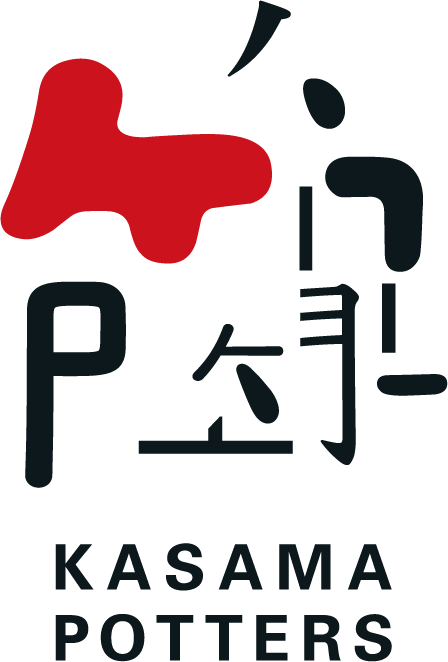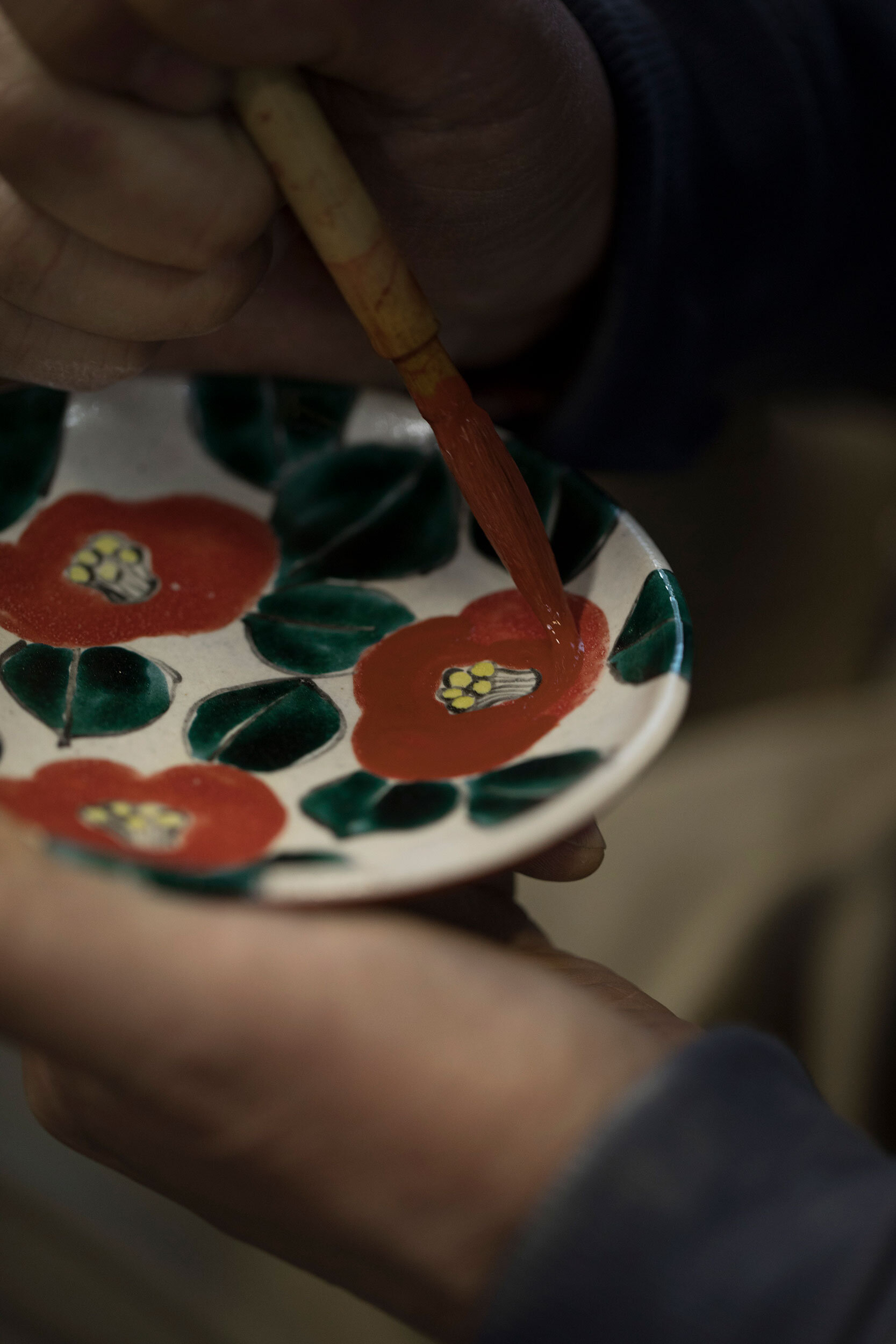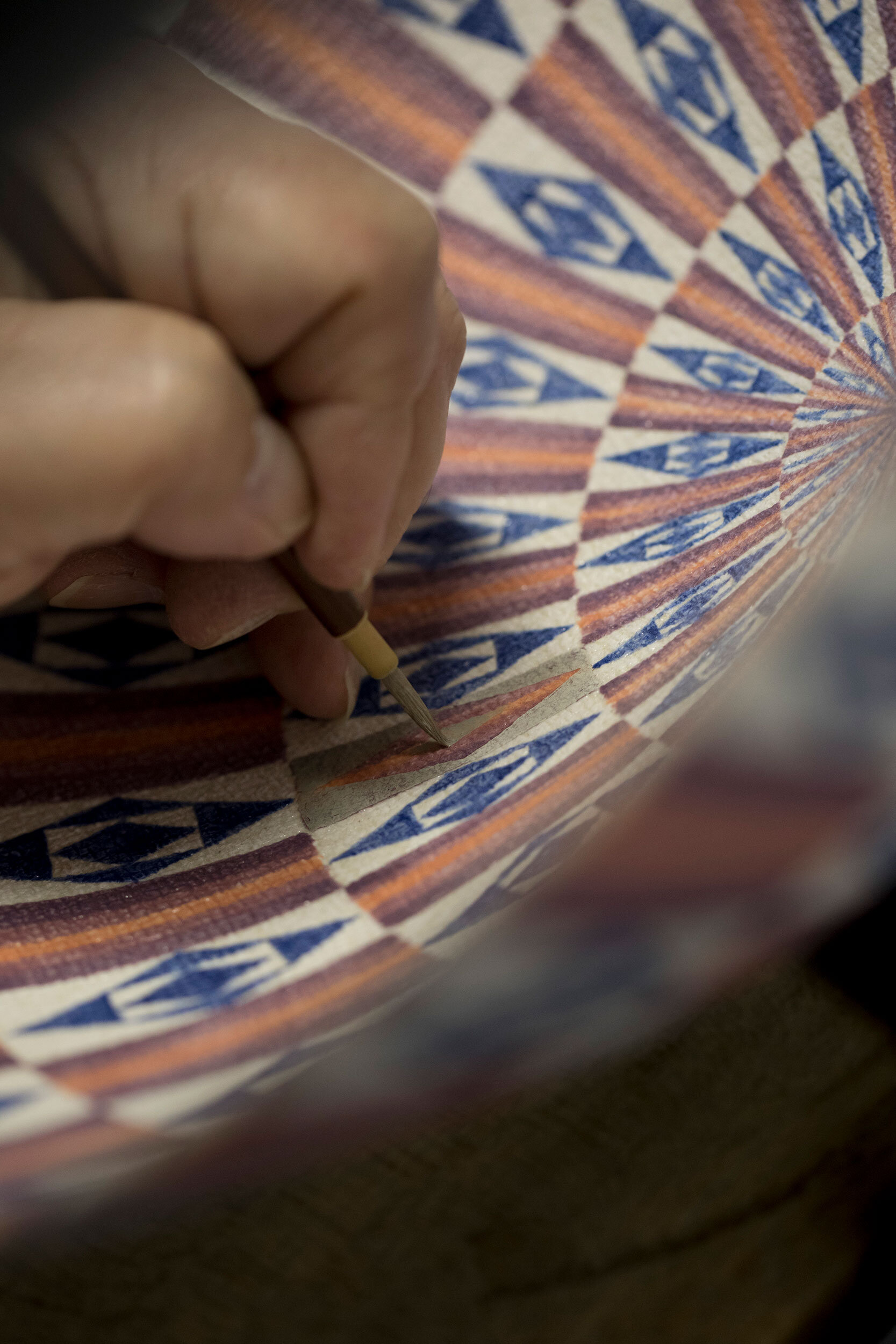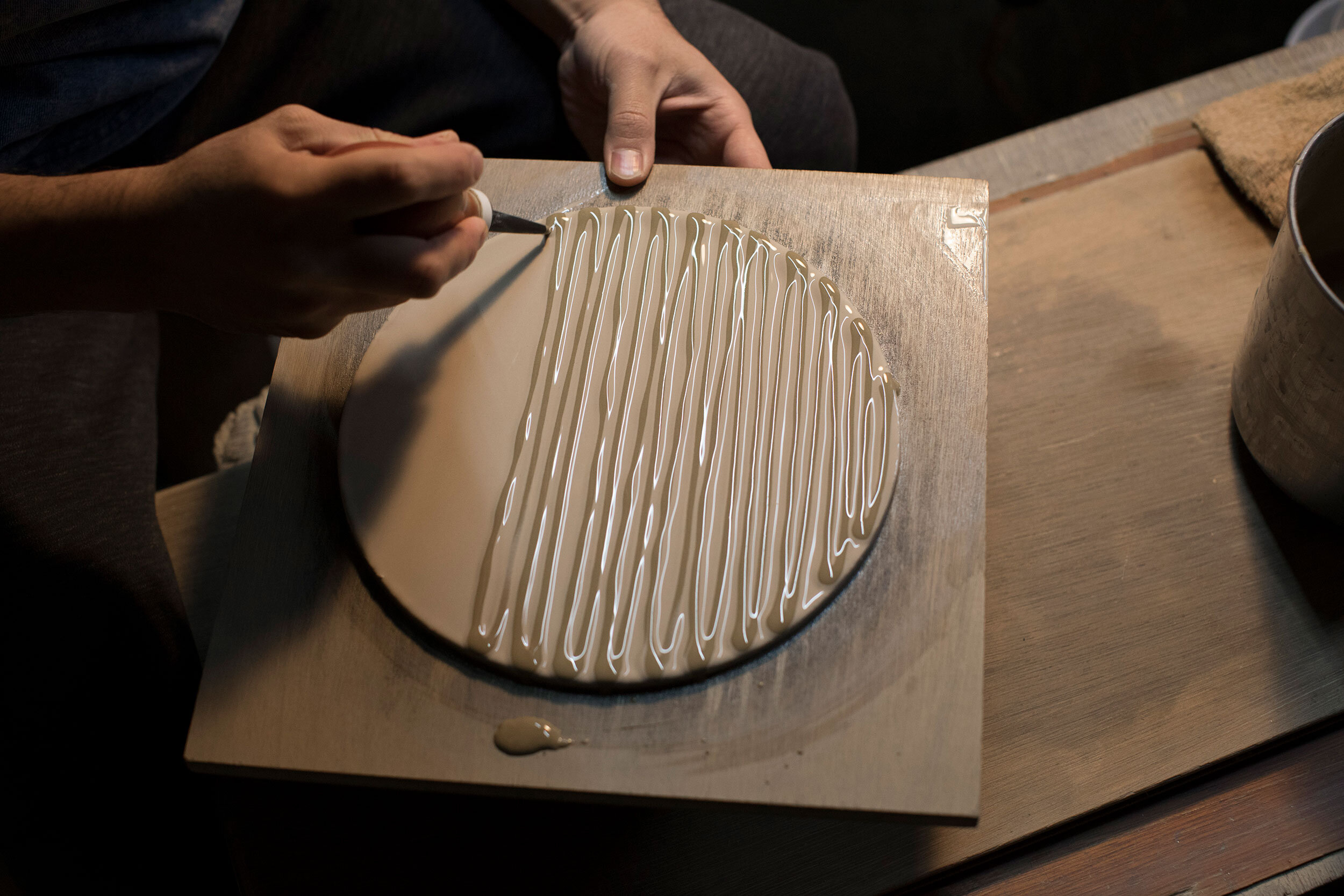A conversation with Kenji Kaneko, Director of Ibaraki Ceramic Art Museum
Kenji Kaneko
Appointed to the role in 2010, Kenji Kaneko is the Director of Ibaraki Ceramic Art Museum, the first museum in eastern Japan to focus on ceramic arts. With a master’s degree in aesthetics and art history from Tohoku University (in Japan’s northern Tōhoku region), Kaneko has served in various roles at a number of Japan’s cultural institutions, including: as a curator at the Suntory Museum of Art in Tokyo, a curator at the National Museum of Modern Art in Tokyo, and later, as a chief curator of the Craft Gallery at the National Museum of Modern Art, Tokyo.
In this interview, we had the honour of exploring Kasama-ware with Kenji Kaneko, drawing on his many years of experience as a curator and expert in ceramic art.
How has Kasama’s close proximity to Tokyo influenced the development of Kasama ware?
(KK) In Japan today there is a strong tendency for all things to gather in Tokyo, and it’s certainly the case that the majority of information is exchanged there. Kasama (in Japan's Ibaraki Prefecture) is around one and a half hours by train or car to the capital. Therefore, it is possible to enjoy rich nature, fresh food, and a relaxed working environment, while maintaining a connection to a metropolitan sense of style, colour, form, and pattern. This provides ceramicists a ‘sense of shape’ with which to work, and is helpful to their craft.
It is also the case that there is easy access to Kasama for ceramic dealers and buyers based in the capital region. Kasama does not have a wholesale representative, therefore the artists themselves need to become the point of contact. There is also easy access for the Tokyo offices representing other ceramic regions, brands, and makers. In Kasama, the tableware in restaurants is to a large degree Kasama-made, whereas in Mito (the capital of Ibaraki Prefecture) and elsewhere, the business skills of Arita and other ceramic regions are on display.
For Kasama’s ceramicists, being close to Tokyo provides benefits in terms of information and distribution, and it’s a source of inspiration. However, it is also a fact that in a business sense, particularly in providing ceramics for the restaurant industry, Kasama’s potters are at a comparative disadvantage. It’s often been said that there was a need for a ‘regional broker’, and this kind of organisational strength is probably required. At present, the ‘Ibaraki Promotion Association’, led by Daisuke Kanazawa, is working on a form of ‘Kasama-ware rebranding’ and has the opportunity to play the role of regional broker.
Kenichiro Inoue, Makoto Oki and Michitaka Fukuno
Unlike other ceramic regions in Japan, Kasama-ware is often said to have ‘no individuality, no trademark’—potters don’t adhere to a certain tradition or technique. How did this come about?
(KK) In comparison with the pottery regions in Japan, the history in Kasama is relatively short—around 250 years. In the early post-war period, when the active kilns were reduced in number to just a few, it meant that set forms and rules no longer became restrictions. This is the most basic aspect of Kasama’s history. In the period that followed, bringing together and training individual ceramicists was key. Self-expression is central to the work of ceramic artists: the rules of tradition, and set materials, are just choices made freely by potters. In other words, the ceramicist’s individual choice is the most important aspect in the selection of forms, techniques, and glaze motifs—this expression is at the heart of their work. It is in this sense that a kind of ‘freedom ware’ appears—the sum of the individual ceramicist’s output.
The unglazed stoneware of Bizen, the patterns and porcelain of Arita, the pale glazes of Hagi, are themselves characteristics of pottery as an industry. Ceramic artists make judgements on whether or not to choose their expressions from within that canon. We could see a divide in industrial craft/pottery and expression-based craft/pottery, and in essence a difference between industry and expression as modes of ceramic creations.
While it is not true in every case, Kasama is a workplace for individual ceramicists. It is a completely different era to those earlier ‘industrial ceramics’, that were characterised by dripping glaze on to urns, pots, and sake vessels. Rather, it is now an era of modern ceramicists working on the ‘pottery of expression.’ It is from this that we can define today’s Kasama-ware as ‘modern ceramics made in Kasama'. Even the term ‘ceramic region’, while it fits the image of industry, does not necessarily describe the place in which ceramicists work—‘workplace’ is perhaps a more apt term. It is not a way of thinking that’s easily changed, but I believe it's important to have this view.
What are some of the key milestones in the evolution of Kasama-ware?
(KK) In the period just after the war, it is no exaggeration to say that with only a few kilns in operation, Kasama was a ceramic region in terminal decline. Greatly concerned about this situation, Ibaraki prefecture and Kasama city made the decision to invite and train individual ceramicists. These ceramicists worked in their personal studios and delivered their work to distribution networks: they could, in essence, base themselves anywhere. Bringing them to Kasama was supported by the creation of the ceramic college at a prefectural level, and the dedicated accommodation and ‘Arts Village’ built by the city.
Gilan Sagawa and Akiko Ozutsumi
How has the Ibaraki Ceramic Art Museum worked to increase the appreciation of ceramic arts and their history in the region?
(KK) Ours is a modern ceramic museum. Based on our permanent collections and historic displays, we chart the course of representative artists, working from the Meiji period (late 19th century) to the present day, ordered by theme and period. Within this, we include work from Kasama and Ibaraki that places it in a wider context.
Kasama hosts ceramicists working in tableware, in exhibitions, in making objects, and in contemporary art. We are keen to break the impression where tableware is equated with products, while exhibitions and contemporary work are considered art. Whether it is something for the table or an object, so long as it contains the potter’s individual expression, then it is art. This is true of the makers of tableware in Kasama. (Conversely, work without individual expression is hard to describe as art—it is what I have referred to as industrial production. This is especially true of copies of old or ancient works, and the like).
In addition to historical exhibitions, we often present one-off, thematically curated displays. This has been extended to include collections of work that showcase the particular characteristics found in Kasama- and Ibaraki-made ceramics. As touched upon, through exhibitions we have sought to show the quality in Kasama tableware, including: displays of kyūsu-type teapots, a focus on female ceramicists working in this field, and a look at the new generation at work. In doing so, we try to bring together work by ceramicists practicing in both Kasama and nearby Mashiko.
Are there any particular Kasama potters whose work has captured your imagination?
(KK) I would say Makiko Suzuki, Miyuki Machida, Yasuharu Morikawa, Mishio Suzuki, Graham McAlister, Yūko Hiramatsu, Mitsuaki Hamaoka, Saori Shimazaki, Shintaro Abe, Marumi Kujirai, and while they are distant to the rest, Noriko Kuwabara and Tetsuo Kuwabara.
Mishio Suzuki
In Europe and the UK, there is a genuine fascination with the ‘Japanese aesthetic’, for example in a concept such as wabi-sabi. Can you describe the Japanese aesthetic from your perspective, particularly in relation to ceramics?
(KK) Ceramics exist within art and craft. Within the linear flow of Japanese culture, in the late Edo period (until 1868) and early Meiji period (from 1868), Western influence crashed in from the side to shake Japan’s culture, including expressions in art and craft. The impact was so large, that for a moment a sense of self was lost. The appearance of this Western influence, and especially the tendency for ’self-expression’, created more questions for the crafts than it did for art. In the Western hierarchy, craft was always placed below art, because it was associated with ‘use’. Whether or not an item is made for practical use, and however it is completed in the end, it can still be appreciated for its craftsmanship.
In post-war Japan, and specifically the 1950s and 1960s, there was a Copernican revolution (a paradigm shift) in how craft was appreciated—it tilted from the way in which a craft object was presented to the process by which it was made. Rather than a focus on the completed item, the focus was instead on what had occurred during the process of making. It was about the method used by the craftsperson to achieve their forms. The story became one about the steps taken to insert the self into the making process—with the craftsperson placed within the material process, there was then a discovery of expression through materials.
Ceramics are limited to the making of forms using clay. This in itself is an important restriction—there is a clear divide in what can and cannot be done with the material. Within the margin of possibilities, there is a search for forms that represent the self. These restrictions are a frame in which to aspire for form. Combined with the limitations imposed by materials on self-expression, this takes us beyond the aesthetics of ‘wabi sabi’, and to the sense of beauty in modern Japan.










